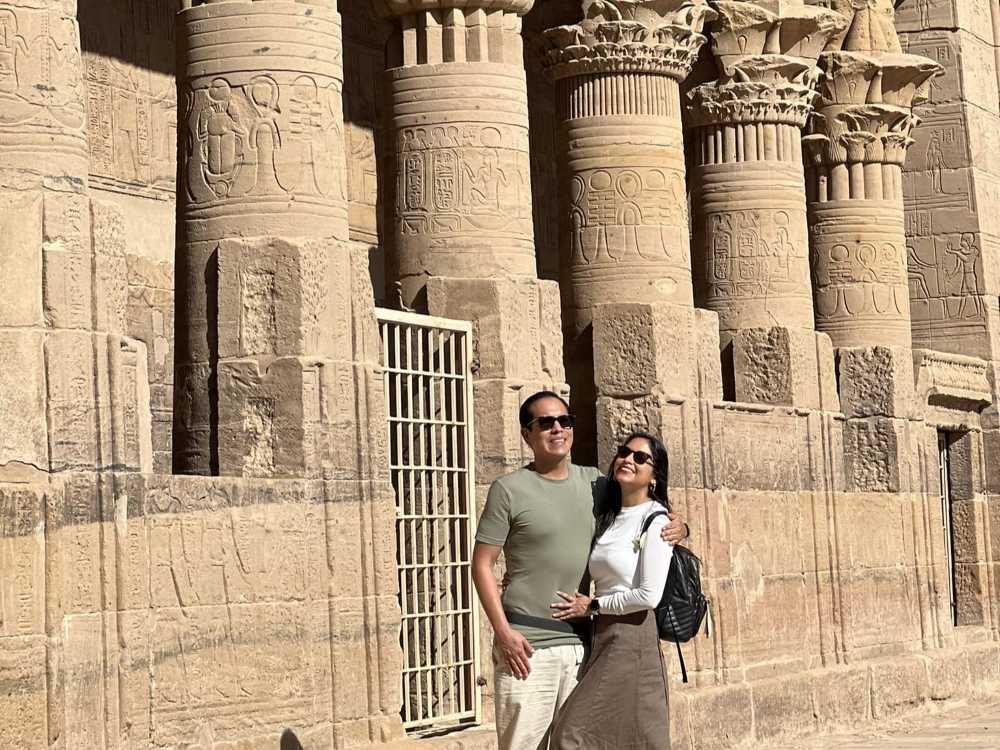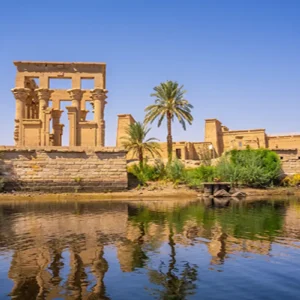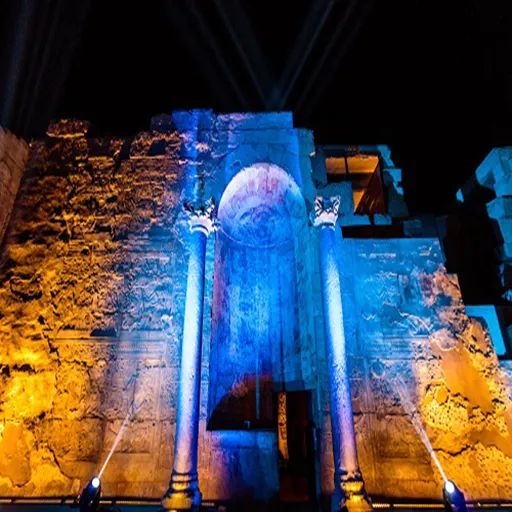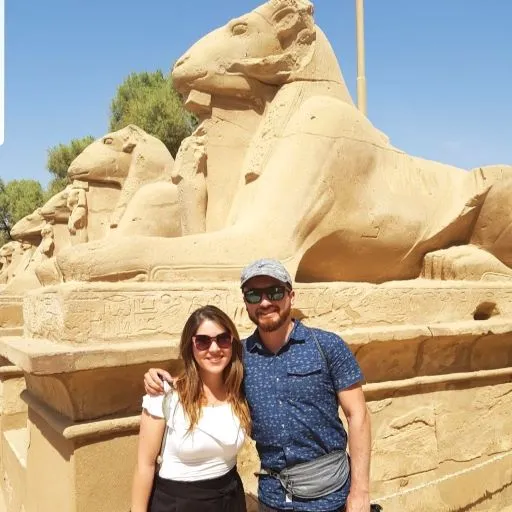The Temple of Philae is one of the most wonderful holy places in the city of Aswan. It is a temple dedicated to the worship of the goddess Isis, and it is the main temple on the island. It was built during the reign of King Ptolemy II. The Temple of Philae is distinguished by its distinguished location on the island of the middle of the Nile in Aswan. It is also distinguished by its beauty, grandeur, and ingenuity. The building is like other temples dating back to the ancient Egyptian civilization, as the visit to the Philae Temple is full of positivity and renewal of energy and activity through contemplation and scrutiny of the beauty and ingenuity of this temple.

Location of Philae Temple
The Temple of Philae is located on the island of Philae, which is located in the middle of the Nile River. This island was one of the most important defensive fortresses of Egypt. The Temple of Philae was moved from its original location to another location, where it was moved to “Agelika” Island for fear of floods after the construction of the High Dam.
Description of Philae Temple
At the entrance to the temple, we find a group of columns, the number of which is 39 in the west of the island. The capitals of these columns are made of papyrus plants and lotus flowers. On the eastern side of the island are the temples of the god “Set” and the goddess “Hathor”, and on the northern side are the main entrance, the Temple of Horus, and a hall. At the entrance, there are two lions whose job is to protect the temple.
Reason of Name
The meaning of the word Philae means peace, friendliness, and love. In the ancient Egyptian language, it was called “Belak,” which means the end or the far place because it was at the end of Egypt. Philae is a Greek word that means beloved. In the Arabic language, it was known as “Ans Al-Wujud” because of its connection to stories. folklore .
Pharaonic landmarks and legends associated with the Philae Temple
There are many Pharaonic monuments on the island of Philae, such as the shrine of “Nectanebo I”, next to which there is a Greco-Roman temple of Ares, and the Temple of Mandulis. There are also columns dating back to the Roman and Ptolemaic era, including the Temple of Hathor, the Temple of Imhotep, and Trajan’s shrine .
Some myths were also associated with the Temple of Philae, such as myths of love, examples of which include the love story between the goddess “Isis” and the god “Azoes” and some other myths, such as the myth of “Anes Al-Wujud,” which is one of the names by which the island is known.
Egypt Tours with Philae Temple
-
From $1440 🎗 10% OFFAswan, Cairo, Egypt, Luxor

 Sale! Add to cart
7 Days Deluxe Nile cruise + Domestic Flights
Sale! Add to cart
7 Days Deluxe Nile cruise + Domestic Flights7 Days Tour To Egypt with Cairo, Aswan, Luxor, and Nile Cruise
Rated 5.00 out of 5Nile Cruise$2,000.00$1,600.007-Days Tour To Egypt with Cairo, Aswan, Luxor, and Nile Cruise Egypt Cruis Era provides you with a 7 days tour to Egypt that covers the essentials of Cairo, Aswan, Luxo -
From $1905 🎗 0% OFFAbu Simbel, Aswan, Cairo, Edfu, Kom Ombo, Luxor

 Sale! Add to cart
9 Days Deluxe Nile cruise + Domestic Flights
Sale! Add to cart
9 Days Deluxe Nile cruise + Domestic Flights9 Day Cairo, Alexandria, Luxor, Edfu, Kom Ombo, Aswan, Abu Simbel
Rated 5.00 out of 5Egypt Tour Packages$3,500.00$2,800.00Why you’ll love this trip: Explore the great and historical Egypt including: Cairo, Alexandria Luxor, Edfu, Kom Ombu, Aswan & Abu Simbel. You’ll cov -
From $1710 🎗 10% OFFAbu Simbel, Aswan, Cairo, Egypt, Hurghada, Luxor

 Sale! Add to cart
10 days deluxe crucero por el Nilo + Vuelos Domésticos
Sale! Add to cart
10 days deluxe crucero por el Nilo + Vuelos Domésticos10 Days Egypt Tour Package to Cairo, Hurghada, Luxor, Aswan, and Nile Cruise
Rated 5.00 out of 5Cairo and Abu Simbel Tour packages$2,300.00$1,900.0010 Days Egypt Tour Package to Cairo, Hurghada, Luxor, Aswan, and Nile Cruise Discover the stunning sights of Egypt’s main cities in 10 Days Egypt Tour Package to Ca -
From $880 🎗 0% OFFAswan, Cairo, Luxor

 Sale! Add to cart
5 Days Deluxe Nile cruise + Domestic Flights
Sale! Add to cart
5 Days Deluxe Nile cruise + Domestic Flights5 Day Luxor to Aswan Nile Cruise From Cairo By Flight
Rated 5.00 out of 5Egypt Tour Packages$3,500.00$2,800.00Why you’ll love this trip: Sail along River Nile over 5 days Explore and relax on 5 days’ trip to cover the sights in Luxor, Aswan, Edfu and Ko -
Why you’ll love this trip: Ride a motorboat across the River Nile, climb to the Cliffside tombs, and head inside to admire the wall paintings








